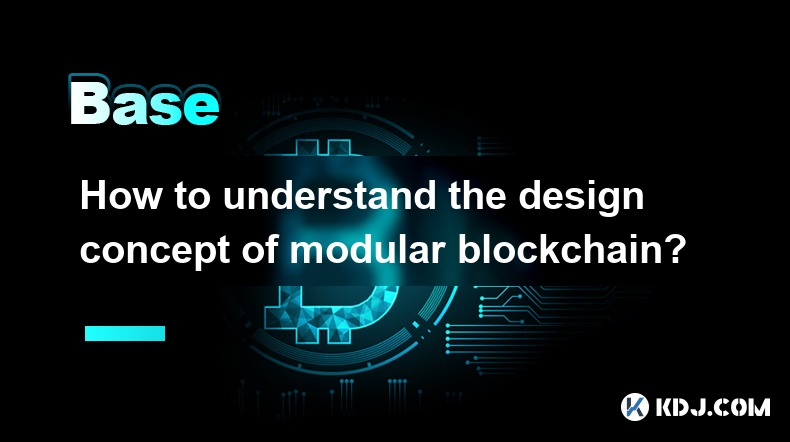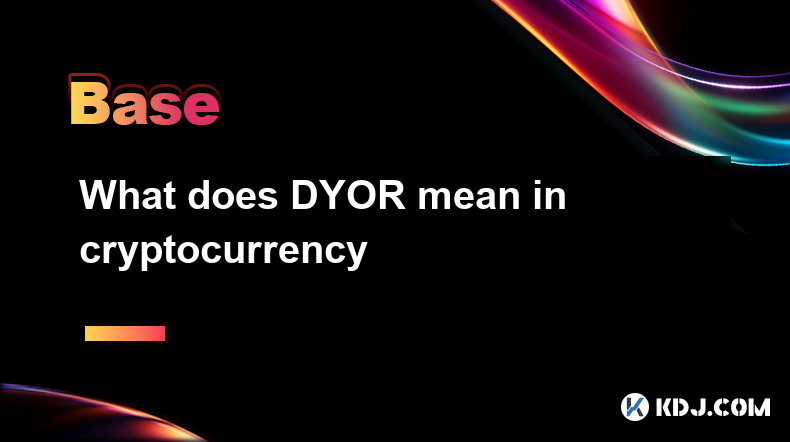-
 Bitcoin
Bitcoin $84,805.7397
0.69% -
 Ethereum
Ethereum $1,581.8812
-0.68% -
 Tether USDt
Tether USDt $0.9999
0.00% -
 XRP
XRP $2.0562
-0.96% -
 BNB
BNB $589.3311
1.12% -
 Solana
Solana $134.9313
2.79% -
 USDC
USDC $1.0000
0.02% -
 TRON
TRON $0.2458
0.67% -
 Dogecoin
Dogecoin $0.1543
-0.96% -
 Cardano
Cardano $0.6126
-0.11% -
 UNUS SED LEO
UNUS SED LEO $9.2328
-2.14% -
 Chainlink
Chainlink $12.5076
0.93% -
 Avalanche
Avalanche $19.0342
0.39% -
 Stellar
Stellar $0.2407
2.27% -
 Toncoin
Toncoin $2.9505
0.68% -
 Shiba Inu
Shiba Inu $0.0...01173
-1.06% -
 Sui
Sui $2.1254
3.30% -
 Hedera
Hedera $0.1634
3.95% -
 Bitcoin Cash
Bitcoin Cash $330.0246
0.99% -
 Hyperliquid
Hyperliquid $17.1939
8.29% -
 Polkadot
Polkadot $3.6482
2.48% -
 Litecoin
Litecoin $75.1392
0.97% -
 Dai
Dai $0.9999
-0.02% -
 Bitget Token
Bitget Token $4.3551
0.66% -
 Ethena USDe
Ethena USDe $0.9991
-0.01% -
 Pi
Pi $0.6142
0.47% -
 Monero
Monero $215.1358
-1.23% -
 Uniswap
Uniswap $5.1597
-0.64% -
 OKB
OKB $50.1254
-3.04% -
 Pepe
Pepe $0.0...07057
-0.75%
How to understand the design concept of modular blockchain?
Modular blockchains enhance scalability and flexibility by separating functionalities into specialized layers, allowing for easier upgrades and integration with other systems.
Apr 15, 2025 at 02:35 am

Understanding the design concept of modular blockchain involves delving into the structure and philosophy behind this innovative approach to blockchain technology. Modular blockchains aim to enhance scalability, flexibility, and interoperability by breaking down the traditional monolithic architecture of blockchains into separate, specialized components. This design allows for easier upgrades, customization, and integration with other systems. Let's explore the key elements and benefits of modular blockchains in detail.
What is a Modular Blockchain?
A modular blockchain is a type of blockchain architecture that separates its functionalities into distinct layers or modules. Unlike traditional monolithic blockchains, where all functionalities are tightly integrated into a single system, modular blockchains allow each component to operate independently. This separation enables developers to focus on optimizing specific aspects of the blockchain, such as consensus mechanisms, data availability, and execution environments, without affecting the entire system.
Key Components of Modular Blockchains
Modular blockchains typically consist of several key components, each responsible for a specific function. These components include:
Consensus Layer: This layer is responsible for achieving agreement among network participants on the state of the blockchain. Examples of consensus mechanisms used in modular blockchains include Proof of Stake (PoS), Delegated Proof of Stake (DPoS), and others.
Data Availability Layer: This layer ensures that all necessary data for transaction verification is accessible to network participants. It helps maintain the integrity and transparency of the blockchain.
Execution Layer: This layer handles the execution of smart contracts and transactions. It can be optimized for different use cases, such as high-throughput applications or privacy-focused solutions.
Settlement Layer: This layer finalizes transactions and ensures their immutability. It often interacts with other layers to validate and record transaction outcomes.
Benefits of Modular Blockchains
The modular approach to blockchain design offers several advantages:
Scalability: By separating functionalities into different layers, modular blockchains can scale more efficiently. Each layer can be optimized and upgraded independently, allowing the overall system to handle higher transaction volumes.
Flexibility: Developers can customize each module to meet specific needs. For example, a blockchain designed for financial transactions might prioritize a fast and secure execution layer, while one focused on gaming might emphasize a robust consensus mechanism.
Interoperability: Modular blockchains can more easily integrate with other systems and blockchains. By standardizing interfaces between modules, different networks can communicate and share data more effectively.
Innovation: The modular design fosters innovation by allowing developers to experiment with new technologies and protocols without disrupting the entire system. This can lead to faster adoption of cutting-edge solutions.
Examples of Modular Blockchains
Several blockchain projects have adopted a modular approach:
Celestia: Celestia focuses on the data availability layer, aiming to provide a scalable solution for other blockchains to build upon. By specializing in data availability, Celestia enables other projects to focus on their core functionalities.
Cosmos: The Cosmos network uses a modular architecture to enable interoperability between different blockchains. It features the Cosmos Hub as the main blockchain, with various zones and bridges connecting different networks.
Polkadot: Polkadot's design emphasizes interoperability and scalability through its modular structure. It includes a relay chain that connects multiple parachains, each with its own specialized functionality.
How to Implement a Modular Blockchain
Implementing a modular blockchain involves several steps, each focusing on the design and integration of different components:
Define the Purpose: Start by clearly defining the purpose of your blockchain. Identify the specific use case and the functionalities required to achieve it.
Design the Modules: Break down the blockchain into its core components. Determine which functionalities will be handled by each module, such as consensus, data availability, execution, and settlement.
Choose Technologies: Select the appropriate technologies for each module. For example, you might choose Tendermint for the consensus layer, Ethereum's EVM for the execution layer, and a custom solution for the data availability layer.
Develop and Test: Develop each module independently, ensuring that they meet the requirements of your use case. Conduct thorough testing to verify that each module functions correctly and can integrate with the others.
Integrate the Modules: Once each module is developed and tested, integrate them into a cohesive system. Ensure that the interfaces between modules are standardized and compatible.
Deploy and Monitor: Deploy the modular blockchain on a testnet or mainnet, depending on your readiness. Monitor its performance and make adjustments as needed to optimize its operation.
Challenges and Considerations
While modular blockchains offer many benefits, they also present certain challenges:
Complexity: The modular approach can introduce additional complexity in terms of development and maintenance. Ensuring that all modules work seamlessly together requires careful planning and coordination.
Security: With multiple components interacting, the overall security of the system must be carefully managed. Each module must be secure on its own, and the interfaces between them must be protected against potential vulnerabilities.
Interoperability Standards: To achieve true interoperability, modular blockchains need standardized interfaces and protocols. Establishing and maintaining these standards can be challenging but is crucial for the success of the modular approach.
Resource Allocation: Developing and maintaining multiple modules requires significant resources. Projects must carefully allocate their resources to ensure that each component receives the attention it needs.
Frequently Asked Questions
Q: Can modular blockchains be used for private networks?
A: Yes, modular blockchains can be adapted for private networks. By customizing the modules to meet specific privacy and security requirements, organizations can leverage the benefits of modularity while maintaining control over their network.
Q: How do modular blockchains handle upgrades?
A: Modular blockchains can handle upgrades more efficiently than monolithic blockchains. Since each module operates independently, upgrades can be applied to specific components without affecting the entire system. This allows for more frequent and less disruptive updates.
Q: Are there any performance trade-offs with modular blockchains?
A: While modular blockchains offer scalability and flexibility, they can sometimes introduce performance trade-offs due to the added complexity of managing multiple components. However, with proper optimization and design, these trade-offs can be minimized.
Q: Can existing blockchains be converted to a modular architecture?
A: Converting an existing blockchain to a modular architecture can be challenging but is possible. It requires careful planning and redesign of the system to separate functionalities into distinct modules. This process may involve significant development and testing to ensure compatibility and performance.
Disclaimer:info@kdj.com
The information provided is not trading advice. kdj.com does not assume any responsibility for any investments made based on the information provided in this article. Cryptocurrencies are highly volatile and it is highly recommended that you invest with caution after thorough research!
If you believe that the content used on this website infringes your copyright, please contact us immediately (info@kdj.com) and we will delete it promptly.
- Crypto Custody Services Face Tangled Web of Challenges as They Safeguard $2.7 Trillion in Assets
- 2025-04-18 11:45:13
- Binance Advises Multiple Governments on Developing Regulatory Frameworks for Digital Assets
- 2025-04-18 11:45:13
- Cardano (ADA) Price Analysis: Where is the Coin Headed Next?
- 2025-04-18 11:40:13
- Bitcoin Holds Ground Above $80K Despite Drawdowns
- 2025-04-18 11:40:13
- Looking to invest in the best crypto? From DeFi disruptors to zero-gas altcoins, these hot trending cryptos to put in your portfolio
- 2025-04-18 11:35:12
- Will a Spike in Demand Pump XRP to $5?
- 2025-04-18 11:35:12
Related knowledge

How the Lightning Network improves Bitcoin efficiency
Apr 17,2025 at 08:56pm
The Lightning Network represents a significant advancement in the Bitcoin ecosystem, aiming to address some of the most pressing issues related to transaction speed and cost. By enabling off-chain transactions, the Lightning Network drastically improves Bitcoin's efficiency, allowing for faster and cheaper transactions. This article will explore how the...

Analysis of the KYC process of cryptocurrency exchanges
Apr 17,2025 at 05:07pm
The Know Your Customer (KYC) process is a critical component in the operations of cryptocurrency exchanges. It serves as a regulatory measure to prevent fraud, money laundering, and other illicit activities. KYC procedures are designed to verify the identity of users and ensure compliance with financial regulations. This article delves into the various ...

What does Floor Price mean in the NFT market
Apr 17,2025 at 12:42am
The term Floor Price is a critical concept within the NFT (Non-Fungible Token) market, serving as a key indicator for both buyers and sellers. In essence, the floor price represents the lowest price at which an NFT from a particular collection is currently listed for sale on a marketplace. This price point is crucial for understanding the perceived valu...

How to understand the TVL indicator in DeFi projects
Apr 17,2025 at 03:28pm
Understanding the TVL indicator in DeFi projects is crucial for investors and enthusiasts looking to gauge the health and popularity of decentralized finance platforms. TVL, or Total Value Locked, represents the total amount of assets that are currently staked or locked in a DeFi protocol. This metric serves as a barometer for the trust and interest tha...

What does DYOR mean in cryptocurrency
Apr 17,2025 at 03:00pm
DYOR, or 'Do Your Own Research,' is a crucial mantra in the cryptocurrency community. It emphasizes the importance of individuals conducting their own thorough investigations before making any investment decisions. In the fast-paced and often volatile world of cryptocurrencies, relying solely on others' advice or the hype surrounding a particular coin c...

What is Alpha? How to find Alpha opportunities?
Apr 16,2025 at 12:42pm
What is Alpha?Alpha is a term widely used in the financial world, including the cryptocurrency market, to describe the ability of an investment to outperform a benchmark. In the context of cryptocurrencies, alpha refers to the excess return an investor achieves over the market's average return. For example, if the overall crypto market grows by 10% in a...

How the Lightning Network improves Bitcoin efficiency
Apr 17,2025 at 08:56pm
The Lightning Network represents a significant advancement in the Bitcoin ecosystem, aiming to address some of the most pressing issues related to transaction speed and cost. By enabling off-chain transactions, the Lightning Network drastically improves Bitcoin's efficiency, allowing for faster and cheaper transactions. This article will explore how the...

Analysis of the KYC process of cryptocurrency exchanges
Apr 17,2025 at 05:07pm
The Know Your Customer (KYC) process is a critical component in the operations of cryptocurrency exchanges. It serves as a regulatory measure to prevent fraud, money laundering, and other illicit activities. KYC procedures are designed to verify the identity of users and ensure compliance with financial regulations. This article delves into the various ...

What does Floor Price mean in the NFT market
Apr 17,2025 at 12:42am
The term Floor Price is a critical concept within the NFT (Non-Fungible Token) market, serving as a key indicator for both buyers and sellers. In essence, the floor price represents the lowest price at which an NFT from a particular collection is currently listed for sale on a marketplace. This price point is crucial for understanding the perceived valu...

How to understand the TVL indicator in DeFi projects
Apr 17,2025 at 03:28pm
Understanding the TVL indicator in DeFi projects is crucial for investors and enthusiasts looking to gauge the health and popularity of decentralized finance platforms. TVL, or Total Value Locked, represents the total amount of assets that are currently staked or locked in a DeFi protocol. This metric serves as a barometer for the trust and interest tha...

What does DYOR mean in cryptocurrency
Apr 17,2025 at 03:00pm
DYOR, or 'Do Your Own Research,' is a crucial mantra in the cryptocurrency community. It emphasizes the importance of individuals conducting their own thorough investigations before making any investment decisions. In the fast-paced and often volatile world of cryptocurrencies, relying solely on others' advice or the hype surrounding a particular coin c...

What is Alpha? How to find Alpha opportunities?
Apr 16,2025 at 12:42pm
What is Alpha?Alpha is a term widely used in the financial world, including the cryptocurrency market, to describe the ability of an investment to outperform a benchmark. In the context of cryptocurrencies, alpha refers to the excess return an investor achieves over the market's average return. For example, if the overall crypto market grows by 10% in a...
See all articles
























































































